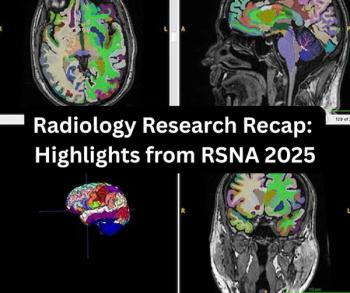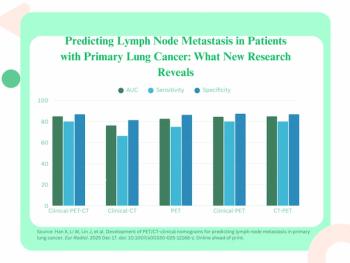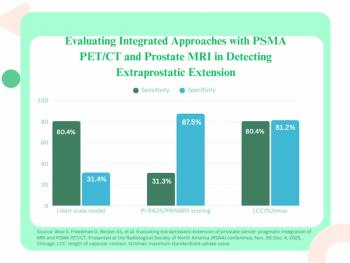
Could a New PSMA PET Agent Improve Detection of Distant Metastatic Lesions in Patients with Prostate Cancer?
In a video interview from the recent American Society of Clinical Oncology Genitourinary Cancers (ASCO GU) Symposium, Brian Chapin, MD, discussed emerging research that demonstrated the ability of the positron emission tomography (PET) agent 18F-rhPSMA-7.3 to diagnose distant M1 lesions prior to surgery for patients with intermediate to high-risk prostate cancer.
Conventional imaging can be limited in the detection of metastatic lesions associated with prostate cancer. Specificity rates for computed tomography (CT) are “reportedly all over the map,” ranging from 40 to 60 percent, pointed out Brian Chapin, MD, in a video interview from the recent American Society of Clinical Oncology Genitourinary Cancers (ASCO GU) symposium.
“When there is lymph node involvement … , the lymph nodes themselves can be small and the deposits within those lymph nodes can be as small as 1 to 3 mm in size sometimes so it’s really hard to identify those with a conventional imaging approach,” explained Dr. Chapin, an associate professor, director of clinical research and fellowship program director in the Department of Urology within the Division of Surgery at the University of Texas MD Anderson Cancer Center in Houston.
However, in recent research presented at the ASCO GU symposium, Dr. Chapin and colleagues found the use of the radiopharmaceutical agent 18F-rhPSMA-7.3 (Blue Earth Diagnostics/Bracco Imaging) with positron emission tomography (PET) led to verified detection of distant metastatic lesions in 10 to 15 percent of 335 patients with newly diagnosed intermediate or high-risk prostate cancer.
“One in 10 patients that we had planned to bring to the operating room with presumed localized prostate cancer indeed had metastatic disease, which is quite substantial, especially when you’re looking at a population of men who had (negative conventional imaging with CT, MRI and bone scan),” emphasized Dr. Chapin. “Those were all negative and you’re identifying metastatic disease in one in 10 patients. That is pretty substantial because that can change our clinical decision-making in how we treat patients.”
(Editor’s note: For related content, see “
For more insights from Dr. Chapin, watch the video below.
Newsletter
Stay at the forefront of radiology with the Diagnostic Imaging newsletter, delivering the latest news, clinical insights, and imaging advancements for today’s radiologists.




























